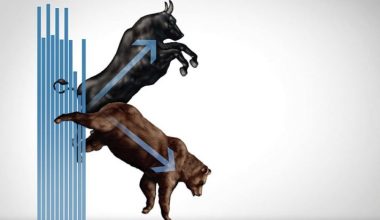Samvat 2079 has begun with major challenges for the global economy. Economic growth will slow down sharply in the coming year and there is a risk of the global economy tipping into recession. High global inflation and the consequent monetary tightening by almost all the leading central banks of the world have the potential to create major convulsions in financial markets.
The energy crisis triggered by the Ukraine war has pushed Europe into double-digit inflation. The Euro zone inflation in September has spiked to 10 percent. Strikes demanding higher wages have erupted in mature developed economies like France, Germany, and UK. From the market perspective, the elephant in the room is the US inflation and the Fed’s ultra-hawkish stance. US inflation at 8.2 percent in September is continuing to surprise on the upside. The Fed has no alternative but to continue monetary tightening to tame inflation. Markets expect another 75 bp rate hike by the Fed in November. The terminal US interest rates may go beyond 4.6 percent by March 2023.
As Warren Buffet famously said, “interest rates are to asset prices like gravity to apple.” Fixed income returns are rising. The US 10-year bond yields are north of 4 percent and dollar continues to strengthen. Rising fixed income returns can trigger a risk-off phase in markets. Investors should watch out for the emerging trends.
Rupee has depreciated around 11 percent against the dollar, so far, this year. It is important to appreciate the fact that rupee has appreciated against the euro, the pound and the yen. The argument that this is a phenomenon of dollar appreciation is correct; but that is poor relief from the economic perspective. Double digit depreciation in the rupee will aggravate imported inflation. The RBI has a tough task ahead.
The present negative sentiments will change when the US inflation indicates a declining trend. There is a view gaining ground among some noted economists and market experts that the Fed is overdoing the rate hike which can seriously impact US growth and the global economy. Since this is a risk, the Fed might moderate rate hikes if inflation shows signs of declining.
Among large economies, India is leading in economic growth and market performance. But India cannot remain totally decoupled from the global trend. Even though India will be the fastest-growing large economy this year and next, sharp global slowdown will impact India’s GDP growth too via sluggish export growth. In brief, there are serious near-term challenges.
In this challenging environment investors should have a longer-than-normal investment perspective. The long-term scenario is bullish. India is now the world’s fifth largest economy. IMF has projected India to become the third largest economy in the world overtaking Germany and Japan by 2028. It is important to appreciate that this is in total dollar GDP terms. In per capita income – less than $ 2500 – we are way behind. But from the market perspective, this presents a great opportunity. As the per capita income rises, say above $ 5000, discretionary consumption will rise sharply benefitting large businesses. Corporate earnings will explode triggering massive rallies in the stock market. Unprecedented wealth creation will happen. Investors should focus on this inevitable trend and how to profit from it. The best strategy during volatile times like now is patient systematic investment.






